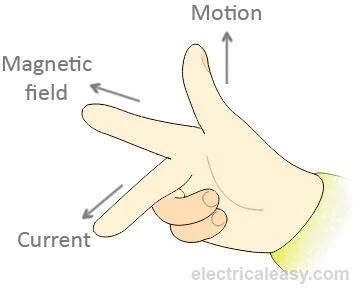Magnetic Field – Definition, Properties, Diagram, Applications & FAQs
🔍 What is a Magnetic Field?
A magnetic field is a region around a magnetic material or a moving electric charge within which the force of magnetism acts. It is invisible but is responsible for the attractive or repulsive forces that magnets exert on each other or on materials like iron, nickel, and cobalt.
📘 Magnetic Field Definition (Class 10 Level)
A magnetic field is defined as:
“The region around a magnet where the force of attraction or repulsion can be detected.”
It is represented by magnetic field lines, which show the direction and strength of the field.
📐 Representation of Magnetic Field
- Magnetic fields are represented by field lines.
- Field lines go from the North Pole to the South Pole of a magnet.
- The closer the field lines, the stronger the magnetic field.
- Field lines never intersect.
⚙️ Magnetic Field Due to a Current-Carrying Conductor
When electric current flows through a conductor, it produces a magnetic field around it.
Right-Hand Thumb Rule:

If you hold the conductor with your right hand so that the thumb points in the direction of current, then the fingers curl in the direction of the magnetic field.
Magnetic Field Around:
- Straight wire – Concentric circles around the wire.
- Loop – Field lines form closed curves with stronger fields at the center.
- Solenoid – Uniform magnetic field similar to a bar magnet.
🧲 Properties of Magnetic Field
- It is a vector quantity (has direction and magnitude).
- Magnetic field lines emerge from the North Pole and enter the South Pole.
- Field lines never intersect.
- The density of field lines represents the strength of the magnetic field.
- Magnetic field is strongest at the poles of a magnet.
- Like magnetic poles repel, unlike poles attract.
🧮 SI Unit of Magnetic Field
- The SI unit of magnetic field is Tesla (T).
- Smaller unit often used: Gauss (G), where 1 Tesla = 10,000 Gauss.
🧠 Applications of Magnetic Fields
- Electric motors and generators
- Magnetic compasses
- MRI machines in hospitals
- Credit and debit card strips
- Speakers and microphones
- Maglev trains
✅ Advantages of Understanding Magnetic Fields
- Helps in understanding electromagnetism and its applications.
- Essential for designing electronic devices.
- Important in medical imaging and industrial machines.
❌ Disadvantages of Strong Magnetic Fields
- Can damage sensitive electronic devices.
- May interfere with pacemakers and other medical implants.
- Can cause data loss in magnetic storage devices.
📊 Magnetic Field vs Electric Field
| Feature | Magnetic Field | Electric Field |
|---|---|---|
| Source | Moving charges or magnets | Stationary electric charges |
| Direction | North to South | Positive to Negative |
| Measured in | Tesla (T) | Newton per Coulomb (N/C) |
| Represented by | Magnetic field lines | Electric field lines |
🧾 Conclusion
Understanding magnetic fields is crucial in both academics and technology. From school-level physics to advanced electronics and medicine, magnetic fields are everywhere. Whether you’re a student or a curious learner, knowing how magnetic fields work can help you make sense of many everyday technologies.
📌 Frequently Asked Questions (FAQs)
1. What is a magnetic field?
A magnetic field is the area around a magnet or current-carrying wire where magnetic force is felt.
2. What is the SI unit of magnetic field?
Tesla (T).
3. What are magnetic field lines?
Imaginary lines that show the direction and strength of a magnetic field.
4. How is a magnetic field produced?
By magnets or moving electric charges (current).
5. What are the applications of magnetic fields?
Used in motors, generators, MRI machines, magnetic storage, and more.